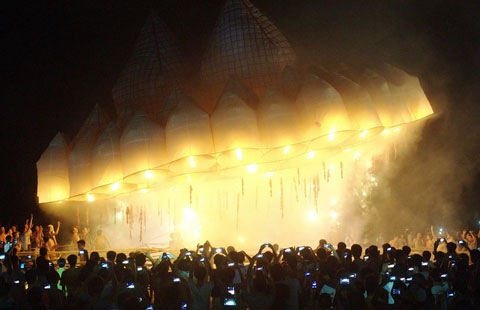Host of Japan's historic surrender
Updated: 2014-09-02 07:35
By He Na(China Daily)
|
|||||||||||
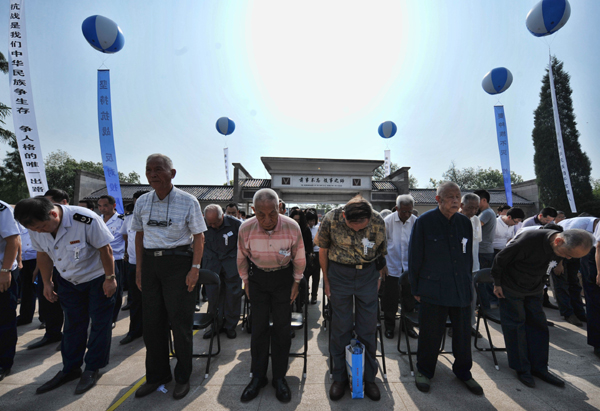 |
|
Veterans of the War of Resistance against Japanese Aggression remember the victims and soldiers who died during the war at the Memorial Hall for Japan's Surrender in the Zhijiang Dong autonomous county, Hunan province, in September 2013. Cheng Tingting / Xinhua |
A little-known site in Hunan province lays claim to receiving the first formal surrender by the Japanese invaders to China, reports He Na in Zhijiang Dong autonomous county, Hunan.
On Sept 9, 1945, the commander-in-chief of Japan's China Expeditionary Army, Yasuji Okamura, signed the Japanese Instrument of Surrender in Nanjing.
The historic ceremony marked an end to eight years of Chinese forces fighting the Japanese invaders. The aggressors killed more than 300,000 Chinese during the Nanjing Massacre alone.
But the capital of Jiangsu province was not the first place to receive Japan's formal surrender.
Less than three weeks earlier, on Aug 21, 1945, representatives of the Japanese troops signed a document surrendering to the Chinese people unconditionally.
The ceremony was carried out in the Zhijiang Dong autonomous county in Huaihua, Hunan province. The county was also the site of the last battle between the Chinese army and the Japanese invaders.
"The surrender in Huaihua is special for China, as one of the major battlefields of World War II. Compared with the ceremony on Sept 2, when Japan surrendered to the entire Allied Forces aboard the USS Missouri battleship and the one on Sept 9, the unconditional surrender in Zhijiang might seem more simple. But it is equally important in history, or even more so," said Wu Jianhong, curator of the Memorial Hall for Japan's Surrender in the county.
After the Japanese government declared its unconditional surrender on Aug 15, 1945, both leaders of the Communist Party of China and the Kuomintang urged Yasuji Okamura to surrender to China formally. On Aug 18, the Kuomintang government designated Zhijiang as the first place in the country to receive Japan's surrender.
Okamura told Japanese vice-general secretary Takeo Imai to lead a surrender delegation to Zhijiang on Aug 21. He signed the document marking the success of the War of Resistance against Japanese Aggression, Wu said.
"It marked the first time in modern times that Japan was presented as the loser in the war, begging for China's orders. It was also the first time that high military representatives of the two countries held a formal meeting since the breakout of the War of Resistance against Japanese Aggression in 1937," he said.
The move put Zhijiang under the spotlight at home and abroad. Its Memorial Hall for Japan's Surrender has been opened to the public since 1985.
Central role
Zhijiang is located at the center of the western part of Hunan, close to the border with Guizhou province.
The transport hub had also functioned as an important military fortress.
Home to the second-largest airport in the Far East of the Allied forces, the county's well-equipped airport could provide adequate cover for various planes.
Zhijiang was also the base for US General Clair Chennault's air force unit, the "Flying Tigers", which helped resist the Japanese invaders during World War II. A memorial to the unit is also in Zhijiang.
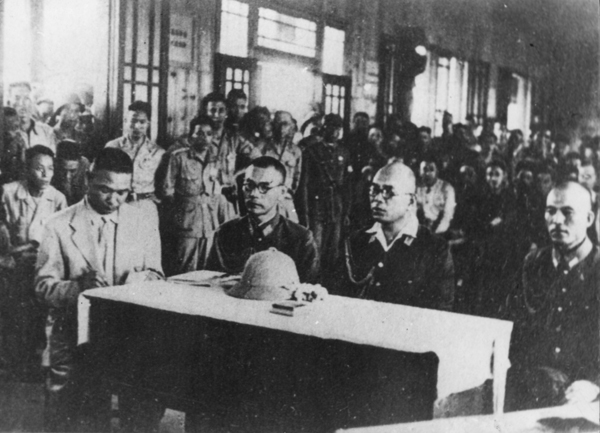 |
|
Japanese representatives during the surrender ceremony to the Chinese people in August 1945. Provided to China Daily |
Related Stories
Chinese leaders to commemorate anti-Japan war victory 2014-09-01 21:53
Japan's naming of islands adds to lingering tension 2014-08-02 07:52
China urges Japan over political obstacles 2014-07-15 20:56
Japan challenges China's sovereignty over islands 2014-07-24 21:45
Commentary: Japan frays nerves of neighboring countries 2014-07-07 11:32
Today's Top News
China, Russia to lay joint gas pipeline
Rules set for HK chief vote
Militia guards US embassy in Libya
450 Pakistans injured in clash with police
My China Story: 'You've got talent'
China's east and west in concert
Putin calls for talks on state system in Ukraine
IMF chief Lagarde investigated in graft case
Hot Topics
Lunar probe , China growth forecasts, Emission rules get tougher, China seen through 'colored lens', International board,
Editor's Picks

|
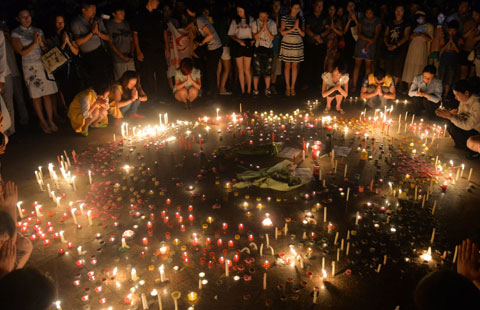
|
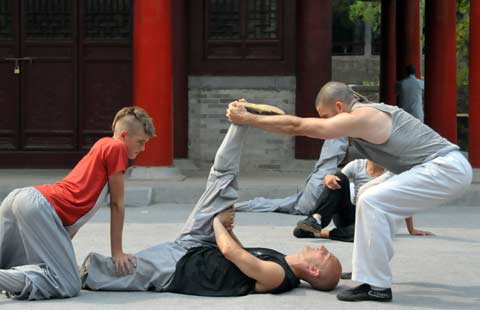
|

|

|

|


